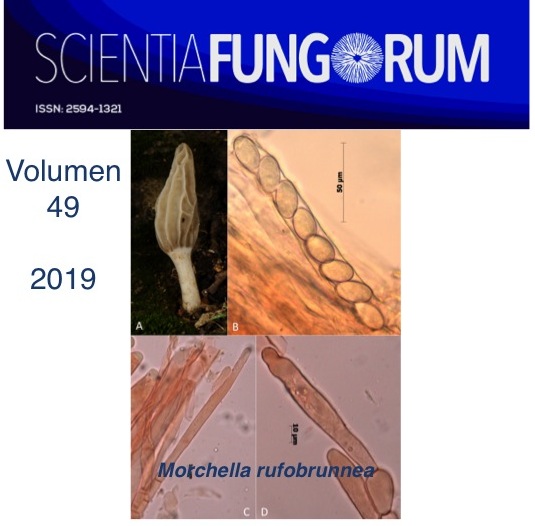Cenococcum geophyllum and its association with Pinus maximartinezii an endangered and native tree of Mexico
DOI:
https://doi.org/10.33885/sf.2019.49.1222Abstract
Background: Despite its wide distribution and ubiquity in different environments, Cenococcum geophilum has been scarcely studied in Mexico, particularly its association with species in danger of extinction as is the case of Pinus maximartinezii.
Objective: Characterizing Cenococcum geophilum morphologically and anatomically, associated in natural conditions to Pinus maximartinezii.
Methods: In Piñones hill, southern Zacatecas, roots samples were taken in the four cardinal points of adult trees. Each sample was extracted with a PVC tube (5 x 30 cm). Later in the laboratory, the roots obtained were analyzed during drought and rainy season. C. geophilum was characterized morphologically according to its distinctive traits.
Results and conclusions: Out of a total of 18 morphotypes, Cenococcum geophilum was the most abundant, since it was found in 42.5 % of the total live ectomycorrhizae roots. It is important to mention that there was no prior record of the formation of the Cenococcum geophilum - Pinus maximartinezii symbiosis. However, molecular biology studies should be performed with the aim of identifying the different ectomycorrhizae morphotypes associated to blue pine, as well as physiology studies with the purpose of elucidating the role of C. geophilum in the conservation of this species in danger of extinction.
Downloads
Downloads
Published
How to Cite
Issue
Section
License
Copyright notice
Open access policy
The authors who publish in this journal accept the following conditions:
In accordance with copyright laws, Scientia Fungorum recognizes and respects the authors’ moral rights, as well as the ownership of property rights, which will be transferred to the journal for dissemination in open access. Scientia Fungorum does not charge for submission and processing of articles for publication.
All the texts published by Scientia Fungorum –with no exception– are distributed under a Creative Commons License Attribution-NonCommercial-ShareAlike 4.0 International (CC BY-NC-SA 4.0), which allows third parties to use the publication as long as the work’s authorship and its first publication in this journal are mentioned.
The authors can enter into independent and additional contractual agreements for the nonexclusive distribution of the version of the article published in Scientia Fungorum (for example include it into an institutional repository or publish it in a book) as long as it is clearly and explicitly indicated that the work was published for the first time in Scientia Fungorum.
For all the above, the authors shall send the form of Letter-transfer of Property Rights for the first publication duly filled in and signed by the author(s). This form must be sent as a complementary file.
This work is licensed under a Creative Commons Attribution-NonCommercial-ShareAlike 4.0 International license (CC-By-NC-SA 4.0).



